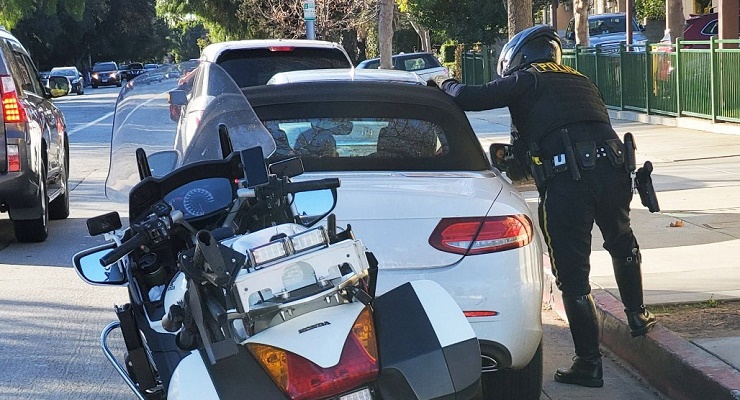
COVID-19 and One-Time Federal Funding
As most readers know, school districts in the region are slated to open the school year online because of the surge in COVID-19 transmission in the community, and the corresponding uncertainty around the safety of staff and students if school was held in person. PUSD is estimated to receive approximately $15 million in CARES Act funding for one-time costs associated with the pandemic, although a large amount of those funds are threatened because of a rule announced by the U. S. Department of Education for how to allocate these funds nationally. The rule from Secretary DeVos would either require PUSD to set aside 30-40% of its one-time CARES Act funding so that local private schools could use the funds for all of their students (not just lower-income students), or if PUSD only set aside the usual approximately 2% of Title 1 funds that represents the percentage of lower-income students that enroll in private schools that access Title 1 funds, the rule would require PUSD to use their funding only for schools with a high enough percentage of lower-income families (“Title 1 schools”). Five of PUSD’s schools could not benefit from CARES Act funding, even though of course those students need all of the COVID-related spending that other schools need if they are to re-open safely. PUSD has recently agreed to join a complaint that will be filed against this announced rule for allocating CARES Act funds, seeking an injunction against the implementation of the rule.
These funds are to be used for a variety of costs incurred by PUSD during the pandemic, including efforts to compensate for the learning loss that has occurred since schools were closed in March, provide the necessary equipment and curriculum for online learning, and for preparing safe school environments so that schools can open in-person as soon as the level of community spread returns to low levels. The funding must be used during the current calendar (2020) year. I have proposed that PUSD use some of these funds for a massive tutoring effort to address students’ needs. Online learning is of course very challenging and students and families need help. Families with enough wealth have been hiring tutors throughout the pandemic, just as they did before it. I think PUSD families should have the same benefit to such assistance. We do have enough one-time funding to provide this. I believe this will be critical to being able to increase the amount of learning that can happen this fall in an online environment.
Ongoing Increases in Mandatory Costs
With staff’s presentation to the board on June 25, 2020 of the county-required budget, which are the estimates of the revenue and expenditures for the year July 1, 2019 to June 30, one can see that several ongoing costs that PUSD must pay upon demand are rising by large amounts, although the just-passed state budget eliminated the cost of living increase previously scheduled for 2020-2021, meaning that PUSD will not have additional revenue to absorb any of these rising costs. The primary areas where mandatory costs are rising significantly are the following.
Special education. Spending on educational staff and services for special education rose to an estimated $61.1 million in 19-20 from $55.3 million in 17-18. Included in these costs, PUSD’s costs to transport these students from home to school and back are $5.24 million annually, of which only $3.1 mil is reimbursed by the state, so the general fund must supply another $2.14 million to cover the transportation costs. A frustrating side note to the transportation costs: In recent years, PUSD eliminated the remaining busing it had for general education students to try and save money. Its monopolistic busing vendor, First Student, responded by increasing its rates for special education busing dramatically. So now PUSD has to pay much more for less services! These increased costs plus a decline in the amount of revenue received specifically for special education (because the funding is based on total enrollment which has continued to decline) has required a large increase in the general fund contribution to cover these costs. In 17-18, that contribution was about $27.2 million. In 19-20, it is now estimated to be $33.2 million. That’s a 22% increase of $6 million in two years. (In case you were wondering, during this same time period staff’s focus on improvement of special education services and compliance has reduced the annual number of settlements with parents from 44 to 37 and the associated settlement costs from $1.5 million to $875,000, a 42% reduction in those costs. So settlements with parents were only 1.3% of special education costs in 19-20.)
A significant portion of these costs are because of required payments to Non Public Schools (NPS) and also to what are known as Non Public Agencies (NPA). These include the famous local institutions (Frostig, Hillsides, Hathaway-Sycamores, etc.) who receive the well-publicized generous support of the wealthier residents of the area. The total amount PUSD pays to serve special education students placed by the courts and by parents in these NPS institutions and to serve special education students for whom their parents have requested NPA services is now estimated to be about $16 million. This is the large majority of the total cost of the mandatory services PUSD must pay to outside entities to service PUSD special education students, which has risen from $19.5 million in 17-18 to $24.4 million in 19-20, a 25% increase of $4.9 million in two years. When Pasadena’s advocates and parents of special education students want more services for such students, because of the strength of federal and state law and the political support they have, the local providers have strong leverage over PUSD and can raise their prices by much more than the rate of inflation.
Employee Benefits. Mostly because of increases in the district’s contributions to employee pension funds that are mandated by the state, the budget also shows that the cost of employee benefits increased from $58.9 mil in 17-18 to $63.5 mil in 19-20, an increase of $4.6 million or almost 8% in just two years.
Insurance. Also presented at the June 25, 2020 meeting were the district’s annual insurance costs for the coming year. In 17-18, PUSD paid about $1 million for its various kinds of liability, property and excess workman’s compensation insurance. In 20-21, PUSD will pay approximately $1.8 million, an 80% increase in 3 years. These are also mandatory costs which are the premiums that PUSD can get in the marketplace. The insurance marketplace is in a “hard market,” which means that the cost of insurance is rising by double digits for most insureds regardless of losses. This is due to increased claims paid out by insurance companies due to things like wildfires and other natural disasters. In addition the recent passage of AB218 allows retroactive sexual molestation claims and waives any statute of limitations for 2 years; thus allowing claims to be filed against districts through December 2021. That action has had a profound impact on the insurance marketplace prompting carriers to increase premiums, reduce their coverages and/or to terminate offering coverage in California.
2020-21 and beyond and what you can do to help
With the board’s decisions to close 4 schools for the 20-21 year, there will be a reduction in employee costs of about $3 million for this current fiscal year. However, with parents’ desires for more services for their kids that PUSD has little choice but to pay for, and benefits and insurance costs rising sharply, PUSD’s budget is by no means stabilized. You may ask what about the approximately $7 million in new annual revenue that PUSD now receives because of the voters’ passage of Measures I and J in November 2018? As you can see, just the increase in the level of mandatory, ongoing excess special education costs, pension benefits and insurance costs is much greater than the amount of the new annual revenue. It is no wonder that the new revenue from Measures I and J in this past 19-20 fiscal year, the first full year of its implementation, has largely gone into making sure PUSD has had the state-required reserve of 3% of its combined general fund budget, which is coincidentally roughly $7 million.
The budget presented on June 25 shows that PUSD will maintain a reserve above the required 3% during the current 20-21 fiscal year which began July 1. The state and county exert a very high level of accountability over the budgets of school districts, however. They not only require that three budgets be submitted during the fiscal year, in December and March and June, but they also require that a school district maintain reserves of at least 3% of its total expenditures not only in the current year but also in the two “out” years of 21-22 and 22-23. The budget recently passed by the state legislature prohibits any layoffs of employees during this coming 20-21 school year, which means that PUSD can do very little in terms of reducing ongoing costs in the current year. This means during this coming school year, PUSD will have to once again prepare a list of reductions in ongoing costs to be implemented for the 21-22 fiscal year that begins July 1, 2021. The county will require that those reductions be identified for the submission of the first interim budget in December of this year.
These mandatory rising ongoing costs and this year’s constraints mean that in these “out” years the only thing that would prevent more layoffs, program and service reductions, possible school closures (and corresponding political conflicts), etc. would be if the statewide Schools and Communities First November 2020 ballot measure passes. This measure would provide a much needed large boost in ongoing funding for all school districts in the state. PUSD could use the higher level of ongoing funding to hire more teachers and lower class sizes so PUSD could compete better with non-unionized private schools and charters, add more librarians, counselors and nurses and increase the quality of services and programs, pay coaches a living wage, etc. It would fundamentally change the ability of PUSD to afford the services it provides and therefore its ability to serve students. It would take us back towards the days when California’s funding for schools was the envy of the nation (pre Prop-13) instead of where it has been for decades, near the bottom nationally. I hope that the voters won’t be scared off by the ads that imply that the property tax you pay on your home will rise, or that your rent will rise, or that there would be some sort of mass exodus of large businesses from California if the measure passes and these businesses have to pay their fair share of taxes rather than the small amounts they currently pay on very old assessed values. Many of the big California-based companies paying very outdated levels of tax on their commercial business property are among the most profitable and famous companies in the world. They can afford it. (How many times have we heard the gloom and doom warnings against taxes? Remember when they said there would be a fiscal cliff if Prop 30, the wealth tax, was passed because wealthy folks would leave California? Didn’t happen.) The measure does not change the taxation of ANY type of residential property, and it exempts small businesses. I hope you will vote for it and give the students, families, and staff of PUSD a much brighter future.
In terms of the funding needed to provide the improvements in technology required for online learning such as increases in bandwidth, access to the internet, number of devices for students and teachers, etc., PUSD’s board has recently placed on the November 2020 ballot a technology and facilities bond. The passage of this will ensure that all public school students (including those at our charter school facilities) have access to the technology and facilities of the 21st century and keep up with the many big building and improvement projects that have recently been completed or are underway at Pasadena’s various private schools. The facilities part of the bond will be used to continue the modernization of PUSD’s aged schools that was begun with Measures Y and TT. The work from these bond measures has been impressive but a number of projects at all schools had to be cut from Measure TT because of state matching funds promised but then eliminated statewide. This meant many schools did not get their HVAC systems upgraded, IT infrastructure upgrades were not done, irrigation systems districtwide were not upgraded, landscaping at the sites was not addressed, several schools’ athletic facilities were not fully upgraded–Marshall’s outdated track being just one example. A draft project list can be found at https://pusd.granicus.com/MetaViewer.php?view_id=15&clip_id=730&meta_id=118148, with the acronyms explained below the list. Unlike the statewide Schools and Communities First measure, this bond measure will increase your property taxes, by $45 per $100,000 of your property’s assessed value. For a property owner whose assessed value is $500,000, this would increase the annual taxes by $225, or $18.75 per month. Because of the high costs of construction projects, facilities bonds such as this one are the only realistic means that school districts have to pay for facilities improvements. I hope you will also support this measure’s relatively small increase in your taxes so that the public school children of PUSD can have access to high quality facilities and technology and the best learning environments that we can provide.














 0 comments
0 comments


